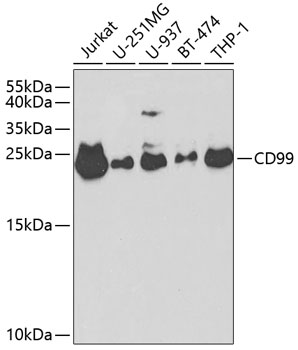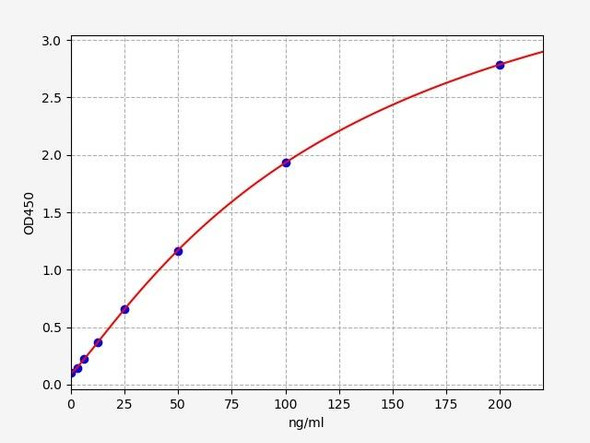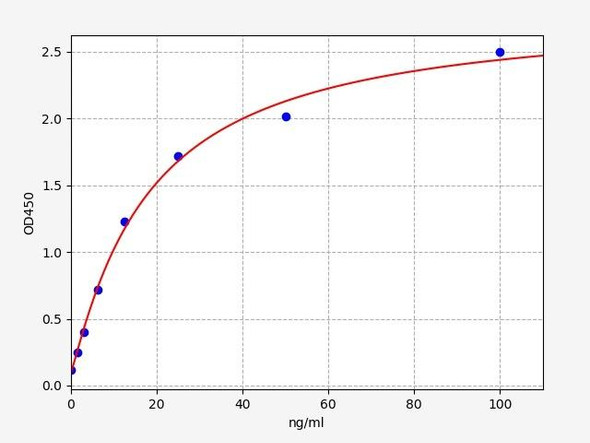Anti-CD99 Antibody (CAB2028)
- SKU:
- CAB2028
- Product Type:
- Antibody
- Reactivity:
- Human
- Host Species:
- Rabbit
- Isotype:
- IgG
- Research Area:
- Cell Biology
Frequently bought together:
Description
| Antibody Name: | Anti-CD99 Antibody |
| Antibody SKU: | CAB2028 |
| Antibody Size: | 20uL, 50uL, 100uL |
| Application: | WB |
| Reactivity: | Human |
| Host Species: | Rabbit |
| Immunogen: | Recombinant fusion protein containing a sequence corresponding to amino acids 23-185 of human CD99 (NP_002405.1). |
| Application: | WB |
| Recommended Dilution: | WB 1:500 - 1:2000 |
| Reactivity: | Human |
| Positive Samples: | Jurkat, U-251MG, U-937, BT-474, THP-1 |
| Immunogen: | Recombinant fusion protein containing a sequence corresponding to amino acids 23-185 of human CD99 (NP_002405.1). |
| Purification Method: | Affinity purification |
| Storage Buffer: | Store at -20'C. Avoid freeze / thaw cycles. Buffer: PBS with 0.02% sodium azide, 50% glycerol, pH7.3. |
| Isotype: | IgG |
| Sequence: | DGGF DLSD ALPD NENK KPTA IPKK PSAG DDFD LGDA VVDG ENDD PRPP NPPK PMPN PNPN HPSS SGSF SDAD LADG VSGG EGKG GSDG GGSH RKEG EEAD APGV IPGI VGAV VVAV AGAI SSFI AYQK KKLC FKEN AEQG EVDM ESHR NANA EPAV QRTL LEK |
| Gene ID: | 4267 |
| Uniprot: | P14209 |
| Cellular Location: | Membrane, Single-pass type I membrane protein |
| Calculated MW: | 16kDa/17kDa/18kDa |
| Observed MW: | 22kDa |
| Synonyms: | CD99, HBA71, MIC2, MIC2X, MIC2Y, MSK5X |
| Background: | The protein encoded by this gene is a cell surface glycoprotein involved in leukocyte migration, T-cell adhesion, ganglioside GM1 and transmembrane protein transport, and T-cell death by a caspase-independent pathway. In addition, the encoded protein may have the ability to rearrange the actin cytoskeleton and may also act as an oncosuppressor in osteosarcoma. This gene is found in the pseudoautosomal region of chromosomes X and Y and escapes X-chromosome inactivation. There is a related pseudogene located immediately adjacent to this locus. |
| UniProt Protein Function: | Involved in T-cell adhesion processes and in spontaneous rosette formation with erythrocytes. Plays a role in a late step of leukocyte extravasation helping leukocytes to overcome the endothelial basement membrane. Acts at the same site as, but independently of, PECAM1. Involved in T-cell adhesion processes. |
| NCBI Summary: | The protein encoded by this gene is a cell surface glycoprotein involved in leukocyte migration, T-cell adhesion, ganglioside GM1 and transmembrane protein transport, and T-cell death by a caspase-independent pathway. In addition, the encoded protein may have the ability to rearrange the actin cytoskeleton and may also act as an oncosuppressor in osteosarcoma. This gene is found in the pseudoautosomal region of chromosomes X and Y and escapes X-chromosome inactivation. There is a related pseudogene located immediately adjacent to this locus. [provided by RefSeq, Mar 2016] |
| UniProt Code: | P14209 |
| NCBI GenInfo Identifier: | 119049 |
| NCBI Gene ID: | 4267 |
| NCBI Accession: | P14209.1 |
| UniProt Secondary Accession: | P14209,O00518, Q6ICV7, A6NIW1, |
| UniProt Related Accession: | P14209 |
| Molecular Weight: | 17,128 Da |
| NCBI Full Name: | CD99 antigen |
| NCBI Synonym Full Names: | CD99 molecule (Xg blood group) |
| NCBI Official Symbol: | CD99 |
| NCBI Official Synonym Symbols: | MIC2; HBA71; MIC2X; MIC2Y; MSK5X |
| NCBI Protein Information: | CD99 antigen |
| UniProt Protein Name: | CD99 antigen |
| UniProt Synonym Protein Names: | 12E7; E2 antigen; Protein MIC2; T-cell surface glycoprotein E2; CD_antigen: CD99 |
| Protein Family: | CD99 antigen |
| UniProt Gene Name: | CD99 |





